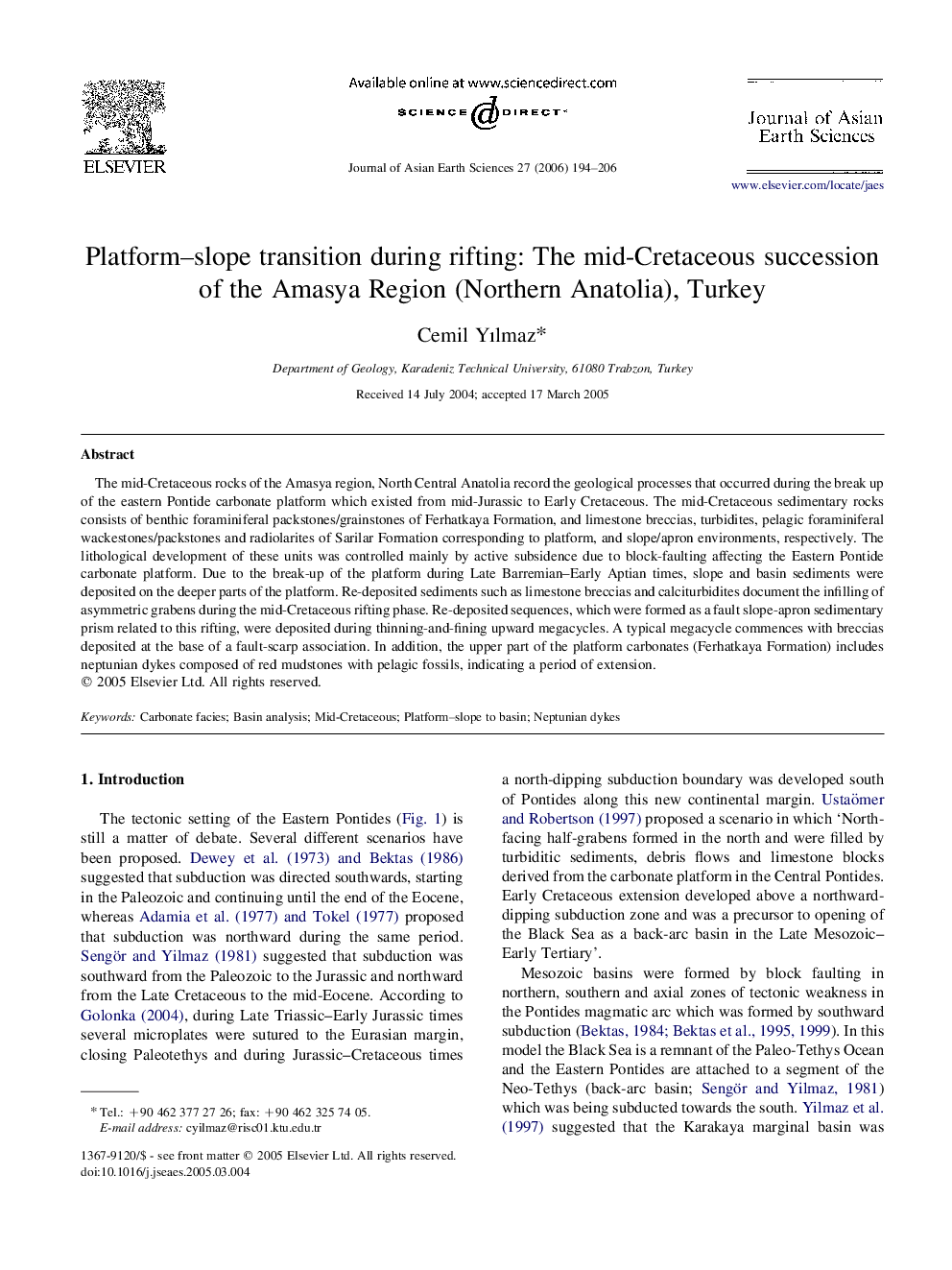| Article ID | Journal | Published Year | Pages | File Type |
|---|---|---|---|---|
| 4732527 | Journal of Asian Earth Sciences | 2006 | 13 Pages |
The mid-Cretaceous rocks of the Amasya region, North Central Anatolia record the geological processes that occurred during the break up of the eastern Pontide carbonate platform which existed from mid-Jurassic to Early Cretaceous. The mid-Cretaceous sedimentary rocks consists of benthic foraminiferal packstones/grainstones of Ferhatkaya Formation, and limestone breccias, turbidites, pelagic foraminiferal wackestones/packstones and radiolarites of Sarilar Formation corresponding to platform, and slope/apron environments, respectively. The lithological development of these units was controlled mainly by active subsidence due to block-faulting affecting the Eastern Pontide carbonate platform. Due to the break-up of the platform during Late Barremian–Early Aptian times, slope and basin sediments were deposited on the deeper parts of the platform. Re-deposited sediments such as limestone breccias and calciturbidites document the infilling of asymmetric grabens during the mid-Cretaceous rifting phase. Re-deposited sequences, which were formed as a fault slope-apron sedimentary prism related to this rifting, were deposited during thinning-and-fining upward megacycles. A typical megacycle commences with breccias deposited at the base of a fault-scarp association. In addition, the upper part of the platform carbonates (Ferhatkaya Formation) includes neptunian dykes composed of red mudstones with pelagic fossils, indicating a period of extension.
